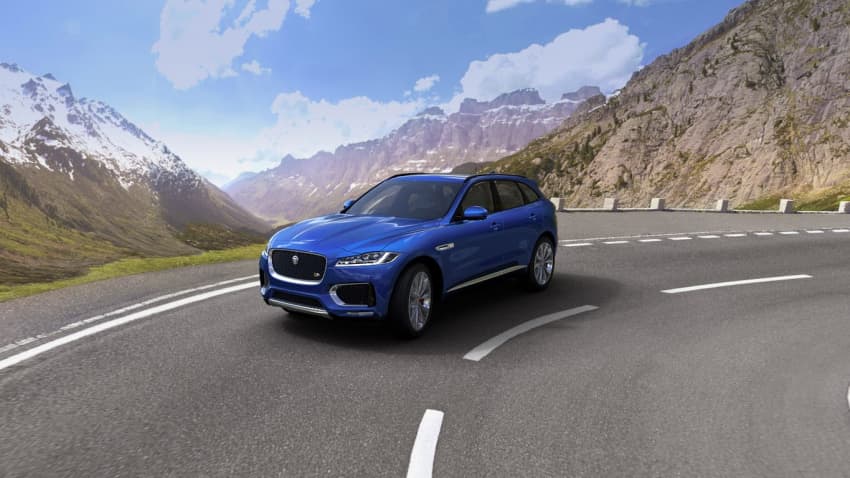Tata Motors' shares tumble 10%, as JLR dents Q3FY18 performance
Tata Motors recorded a consolidated net profit of Rs 1,214.60 crore, growing by a massive 988.64% or 10.88 times, compared to mere Rs 111.57 crore in the corresponding period of the previous year.

As Indian markets witnessed a blood math on Tuesday's trading session, share price of Tata Motors also faced heavy selling pressure so much so that the company tumbled nearly 10% despite clocking eleven-fold rise in its Q3FY18 financial performance.
At around 1217 hours, share price of Tata Motors was trading at Rs 370.50 per piece on the BSE, down by Rs 25.55 or 6.45%. The company has also touched a 52-week low of Rs 357 per piece on stock exchanges.
A day before this tumble, the company posted December 2017 quarter ended result, under which it recorded consolidated net profit of Rs 1,214.60 crore, growing by a massive 988.64% or 10.88-times compared to mere Rs 111.57 crore in the corresponding period of the previous year.
However, Q3FY18 net profit was down by 51.45% from consolidated net profit of Rs 2,501.67 crore in the preceding quarter.
One key reason that dented investors' hope in Tata Motors was weak performance of the company's luxury car brand Jaguar Land Rover (JLR).
Chirag Shah, analysts at Edelweiss Financial Service, said, "While management was positive on India (demand + margins), outlook for JLR remains challenging across key markets (UK, EU and US)."
Dr Ralf Speth, Jaguar Land Rover CEO, said, "Despite headwinds and uncertainty in some markets, JLR still delivered increased unit sales as we continued the launch schedule for new models including the significantly enhanced Range Rover family and all-new Jaguar E-Pace."
JLR reported 3QFY18 EBITDA of GBP685 million (up 12% yoy), which was 1% lower than estimates due to higher-than-expected other expenses and staff costs.
While revenues of JLR came in at GBP 6.3 billion, which was up 4% yoy led by 2.2% yoy improvement in volumes and 1.6% yoy improvement in net realization due to lower hedge losses (GBP 304 million in 3QFY18 versus GBP 455 million in 3QFY17).
On a sequential basis, ASPs declined by 2% largely due to lower sales of Range Rover and Range Rover Sport in the revenue mix.
Shah said, "While JLR’s product launch cycle is well placed, adverse industry development (weakening demand in US/EU/UK) is likely to exert pressure on margins," highlighting that there exist risks of further increase in variable marketing spend (not in our base case).
In the Q3FY18 audit report, Speth said, "As I look ahead, this is a milestone year for JLR as we prepare to launch our first ever electric car, the Jaguar I-PACE, the Range Rover plug-in Hybrids."
According to Edelweiss, rising share of electric vehicles is also likely to exert downward pressure on margins, and added, "In this context, success of new launches remains key to drive volumes and margins."
For medium term, the pace of recovery in JLR profitability will hinge on three factors as per Edelweiss.
They are - 1) discounting trends; 2) impact of product mix (EV + diesel); and 3) capex cycle.
"We cut our FY19E EBIDT/EPS by 5%/16% and introduce FY20E with consol EPS of 49 (up 20% YoY). Maintain ‘HOLD’ with TP of Rs 442 (468 earlier). Long term concerns remain with respect to uncertainty on electrification (lower margins) and capex." said Shah.
On the other hand, Hitesh Goel and Nishit Jalan, analysts at Kotak Institutional Equities, said, "We believe the management is on course to improve operating margins in both standalone and JLR businesses led by cost-reduction initiatives. We maintain BUY rating on attractive valuations and tweak our TP to Rs 520 (from Rs 525 earlier)."
Another reason behind the tumble could be negative free cash flow and rise in net debt of Tata Motors.
As of December 2017, Tata Motors free cash flow stands negative at Rs 5,159 crore, reflecting higher investment, lower operating profits and adverse working capital in JLR due to new product launches.
12:29 PM IST






 Tata Motors stocks fall to multi-year low
Tata Motors stocks fall to multi-year low Auto Expo 2020: Tata Motors unveils compact SUV HBX Hornbill, launches Tata Harrier BS6 model
Auto Expo 2020: Tata Motors unveils compact SUV HBX Hornbill, launches Tata Harrier BS6 model  Tata Harrier BS VI bookings start; here is how much you need to pay
Tata Harrier BS VI bookings start; here is how much you need to pay Tata Motors share price to rise 28% - coronavirus, impact seen as temporary; big money-making opportunity, say experts
Tata Motors share price to rise 28% - coronavirus, impact seen as temporary; big money-making opportunity, say experts Market Buzz Today: Sensex gains over 300 points, Nifty up or 0.75%; Tata Group Shares jump
Market Buzz Today: Sensex gains over 300 points, Nifty up or 0.75%; Tata Group Shares jump